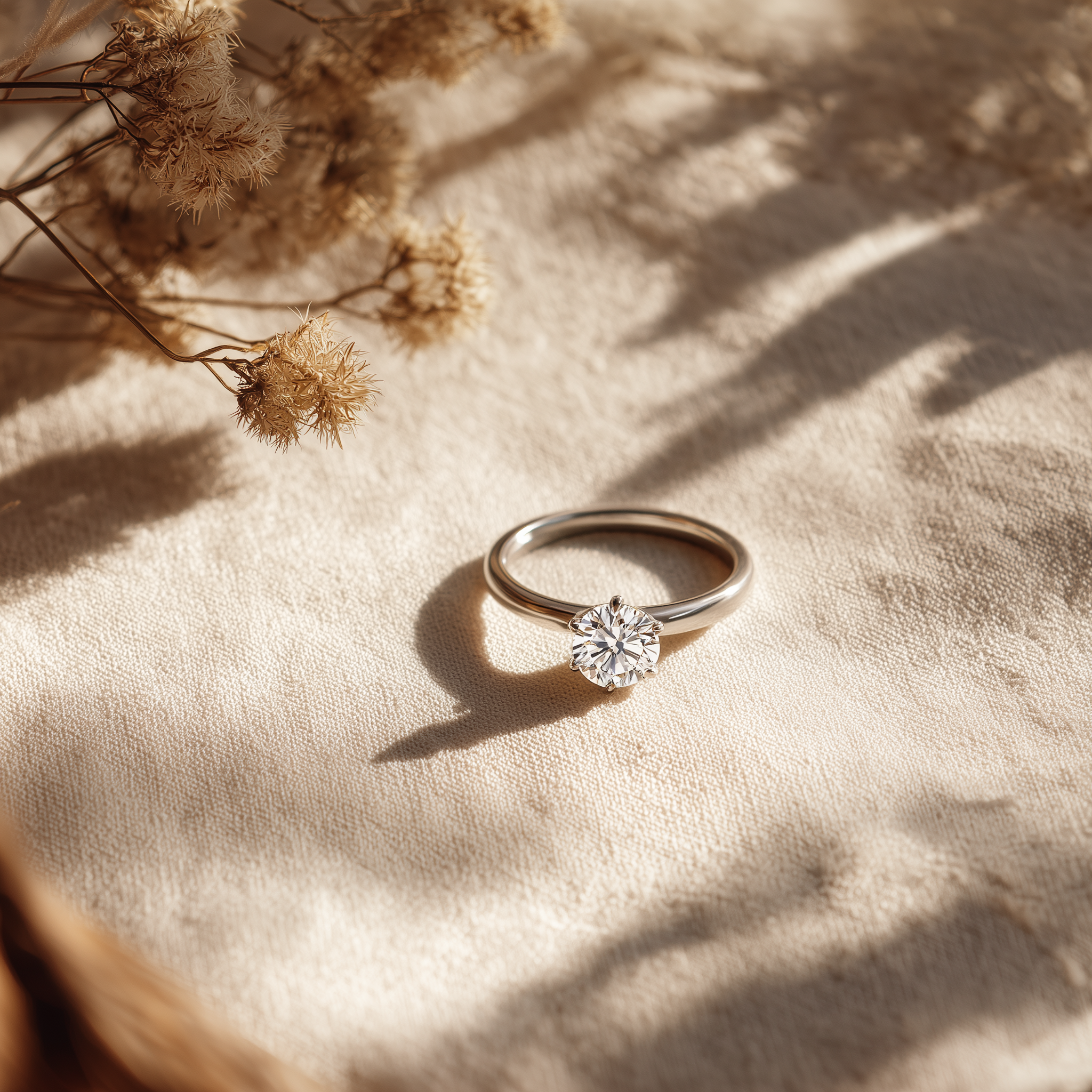What Are Moissanties?
·

·
Moissanite is its own unique gemstone, similar to the likes of Ruby or Emerald. Formed from Silicon Carbide, Moissanite was discovered over 120 years ago and has taken the world by storm thanks to its rarity and the fact it can be grown in a lab with very minimal impact on the environment. Believe it or not, Moissanite is even rarer than diamonds. Why we hear you ask? Well simply put, Moissanite has only been discovered in meteorites and upper mantle rocks. So in order to create lab-grown moissanite gemstones, a highly technical process must be undergone that mimics the natural process.
What are the biggest differences between lab grown diamonds and Moissanite?
Often compared against each other due to their similarities, you may be wondering what the biggest differences are that set lab grown diamonds and Moissanite apart. In short, they have various features that differ slightly, including their price, durability, brilliance and colouring. Here we explain a little more on these differences between the two gemstones.
Price
Lab grown diamonds have continued to grow in popularity thanks to their affordability in comparison with the natural, mined kind. The biggest difference in price between the two is that Moissanite takes this one step further and is even more affordable than a lab grown diamond. Prices will of course vary depending on multiple factors, but generally speaking a Moissanite of the same size will be considerably less in price vs a lab grown diamond of the same stature.
Durability
When ranking the durability of a gemstone, you always refer to the Mohs scale of hardness. On this scale, lab grown diamonds rank slightly higher than Moissanite. Moissanite has a rating of 9.25 whereas lab grown diamonds have a perfect score of 10. That being said, although there is a slight difference both gemstones still rank as an excellent choice durability wise for everyday jewellery pieces and engagement rings.
Brilliance
One of the biggest benefits to Moissanite is their unique and effervescent sparkle. Often related to that same captivating sparkle that a disco-ball emits, Moissanite has a refractive index of double the amount that a lab grown diamond has, which allows it to fire out rainbow-like colours effortlessly when faced with the light. However lab grown diamonds have a brilliance of their own that can’t be matched too, and as they have all the same optical properties as a natural, mined diamond - they share a stunning sparkle and fire that’s loved by many across the globe.
Colour
One of the biggest differences between Moissanite and Lab Grown Diamonds is the fact that the GIA (Gemological Institute of America) grades Lab Grown Diamonds by colour but does not officially grade Moissanite, however the same scale can be applied as a point of reference when it comes to deciding on a Moissanite’s colour. Both gemstones can vary in colour, but Moissanite is known more for being virtually colourless.
Can a jeweller tell the difference between lab grown diamonds and Moissanite?

Yes, a reputable jeweller should be able to tell the difference between a Lab Grown Diamond and a Moissanite stone. Jewellers have specialist tools and high-quality microscopes that can easily decipher the differences between the two gemstones. Moissanites have a slightly different faceted pattern in comparison to Lab Grown Diamonds, meaning that light travels through the stone slightly differently - this is usually the first point of call when comparing the two up against each other.







